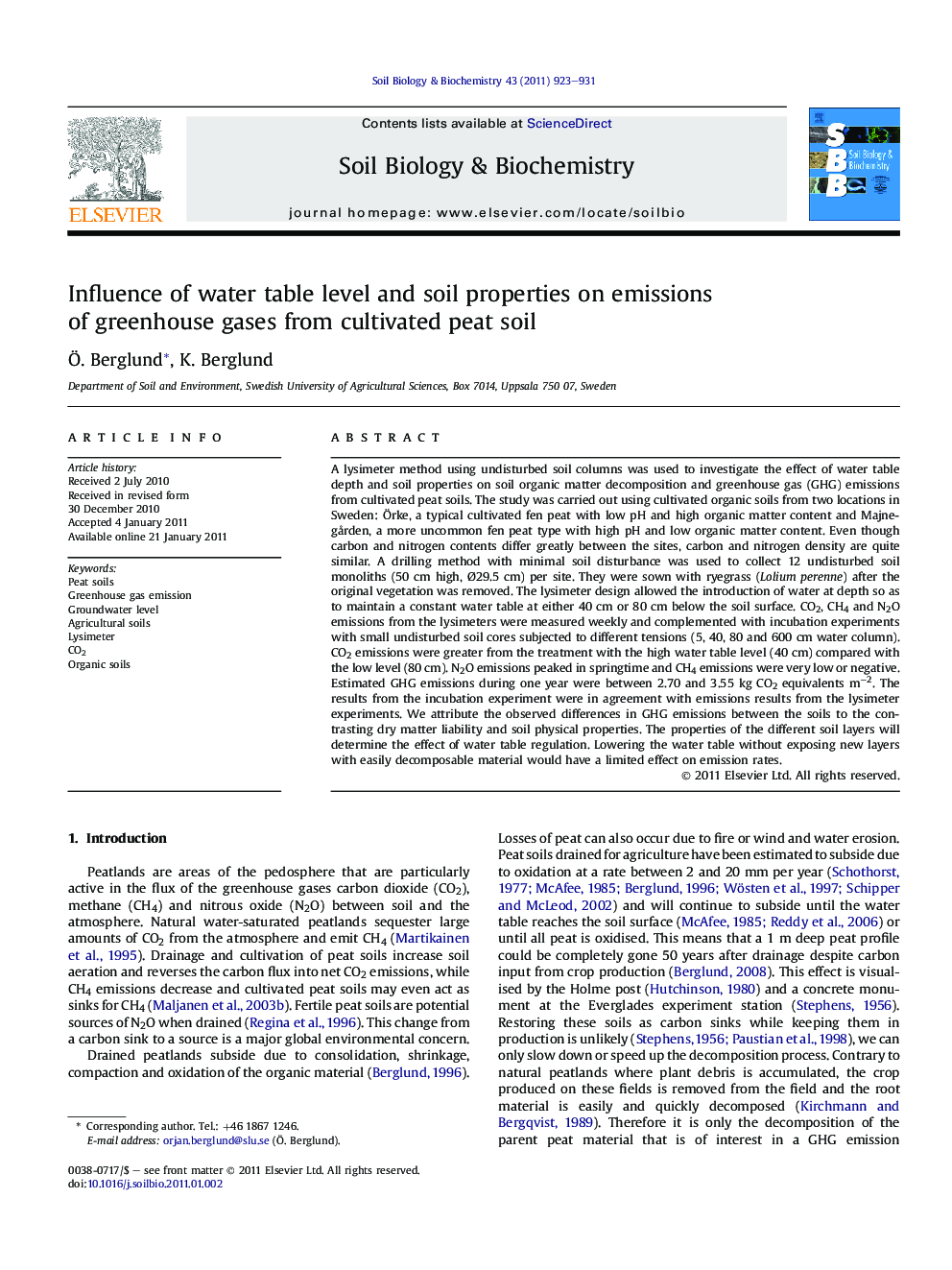| کد مقاله | کد نشریه | سال انتشار | مقاله انگلیسی | نسخه تمام متن |
|---|---|---|---|---|
| 2025511 | 1069999 | 2011 | 9 صفحه PDF | دانلود رایگان |

A lysimeter method using undisturbed soil columns was used to investigate the effect of water table depth and soil properties on soil organic matter decomposition and greenhouse gas (GHG) emissions from cultivated peat soils. The study was carried out using cultivated organic soils from two locations in Sweden: Örke, a typical cultivated fen peat with low pH and high organic matter content and Majnegården, a more uncommon fen peat type with high pH and low organic matter content. Even though carbon and nitrogen contents differ greatly between the sites, carbon and nitrogen density are quite similar. A drilling method with minimal soil disturbance was used to collect 12 undisturbed soil monoliths (50 cm high, Ø29.5 cm) per site. They were sown with ryegrass (Lolium perenne) after the original vegetation was removed. The lysimeter design allowed the introduction of water at depth so as to maintain a constant water table at either 40 cm or 80 cm below the soil surface. CO2, CH4 and N2O emissions from the lysimeters were measured weekly and complemented with incubation experiments with small undisturbed soil cores subjected to different tensions (5, 40, 80 and 600 cm water column). CO2 emissions were greater from the treatment with the high water table level (40 cm) compared with the low level (80 cm). N2O emissions peaked in springtime and CH4 emissions were very low or negative. Estimated GHG emissions during one year were between 2.70 and 3.55 kg CO2 equivalents m−2. The results from the incubation experiment were in agreement with emissions results from the lysimeter experiments. We attribute the observed differences in GHG emissions between the soils to the contrasting dry matter liability and soil physical properties. The properties of the different soil layers will determine the effect of water table regulation. Lowering the water table without exposing new layers with easily decomposable material would have a limited effect on emission rates.
► Soil quality is the most important factor determining the emission rate of greenhouse gases from cultivated peat soils.
► The layer sequence and the soil quality of the different layers determine the effect of water table regulation.
► Lowering the water table only increases emission rates if new layers with easily decomposable material or low C/N ratios are exposed.
► For a specific soil type, temperature is rate-limiting at low temperatures while at higher temperatures, aeration status of the soil is of greater importance.
► In extreme moisture conditions (desiccation or water logging), soil moisture is rate-limiting. Plant growth and root respiration accentuate the effects of soil aeration status.
Journal: Soil Biology and Biochemistry - Volume 43, Issue 5, May 2011, Pages 923–931